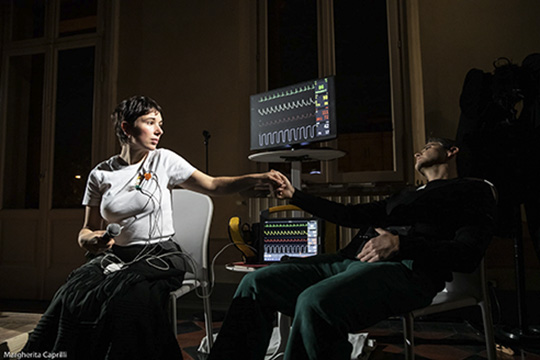A fusion of theater and medical simulation. iSimulate REALITi360 becomes an “actor”, thanks to its participation in the show ‘In the empire of measures’ by Ateliersi.
By definition, the world of theater and that of clinical simulation are destined to intersect. In both cases we work on the reflection of reality, creating a meta-narrative which on the one hand is the core of artistic expression, and on the other is the prerequisite for learning and training in the healthcare field.
We had already talked about how theater resources could be useful in the representation of clinical scenarios, especially the involvement of actors in the role of standardized patients. However, the fusion between theater and medical simulation has reached a new level: there are no longer human resources at the center of this relationship, but the simulators themselves, who have become the protagonists of the staging.
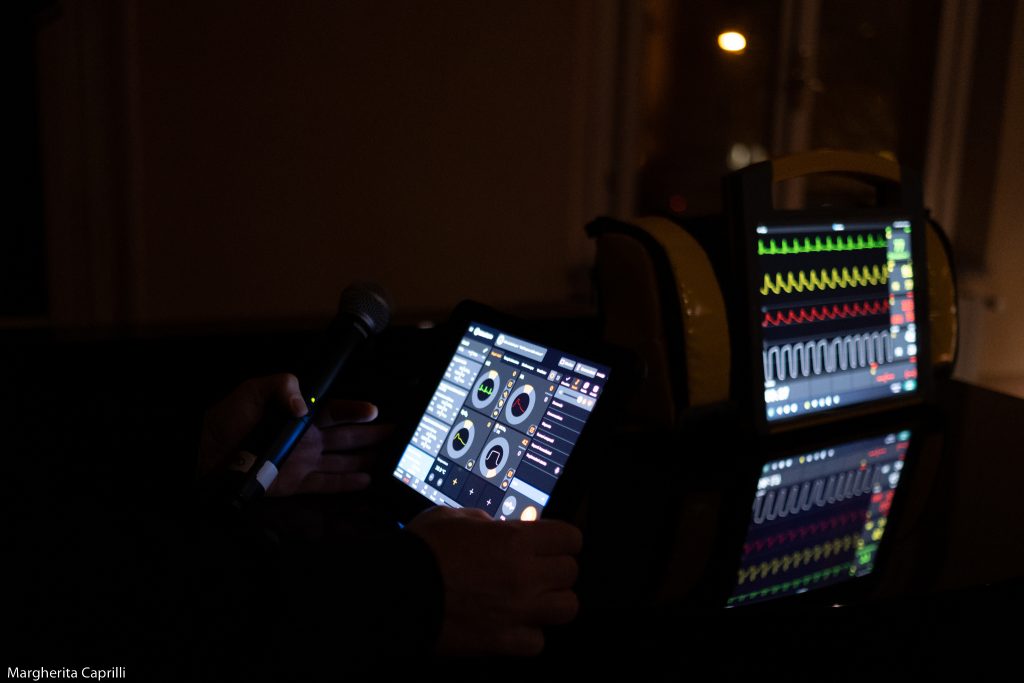
The show ‘In the empire of measures’ by Ateliersi has brought together two different sectors, which are much less distant than one might think. This work, staged at the Teatro degli Storchi in Modena from 30 November to 11 December 2022, and then repeated in the space of the Bologna collective from 17 to 20 January 2023, has made a simulator part of the narrative structure for the first time, elevating it a character role within the plot.
‘In the empire of measures’, by and with Fiorenza Menni and Andrea Mochi Sismondi, explores the life and personality of the Russian poet Marina Cvetaeva, through her own words, weaving her poems and prose writings into the stage representation. Tsvetaeva’s complex and painful existential path (separated from her husband during the October revolution, she was forced to send her youngest daughter to an orphanage, who died shortly after of starvation; she tried to emigrate abroad, but once back in homeland is opposed by the authorities, and will die by suicide in 1941 without having more news of her husband and eldest daughter) is told through different ‘Marinas’, each of which embodies a different aspect of the Russian poet.
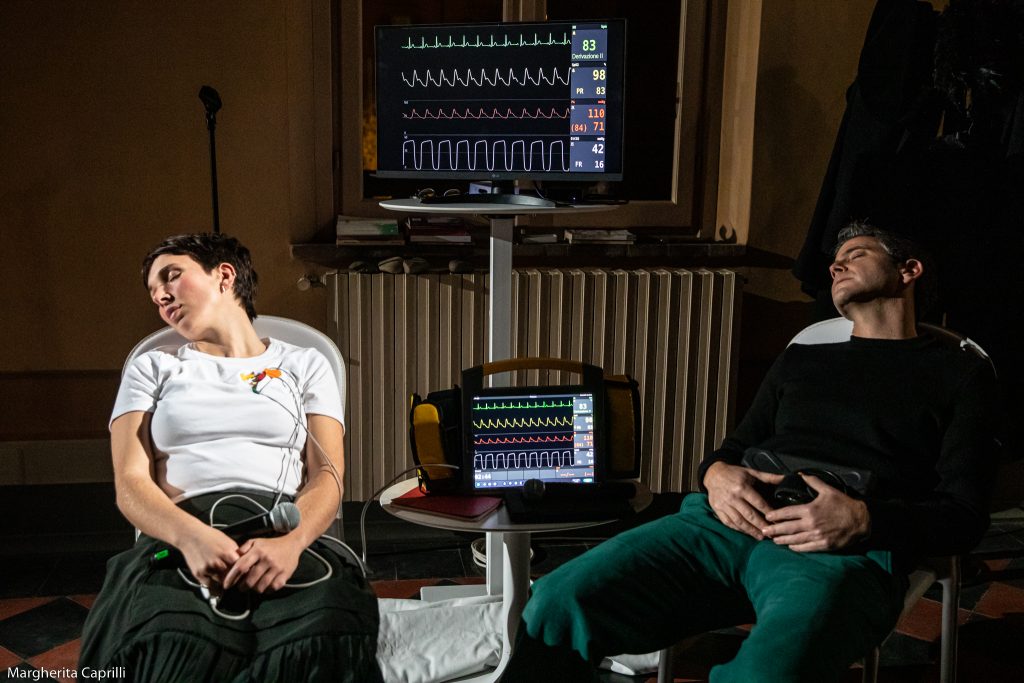
The common thread of all these presences on stage is REALITi360 by iSimulate, the simulator that constantly monitors the heartbeat of the characters. This is because in Tsvetaeva’s production “the heart is very present, not so much as a sentimental matter or in an affective erotic logic, but really physically, as a pulsating element of life, hope, aspirations, lucidity”. For this reason, a stage expedient was necessary in order to represent «the source of the poetic word», as Mochi Sismondi explains.
From there the question arose: but how do you represent the heart? What stratagem is it possible to use in order to make the audience identify with the heart of the character on stage? The answer came from Paolo Innocenti, CEO of SoFraPa, a company specialized in the supply of simulators for medical, rescue and corporate security training, through the use of iSimulate REALITi360. The electrocardiogram simulator allowed the construction of a parallel dramaturgy, given that, once freed from the limitation of monitoring real physiological parameters, it was possible for Menni and Mochi Sismondi to construct another level of the text.
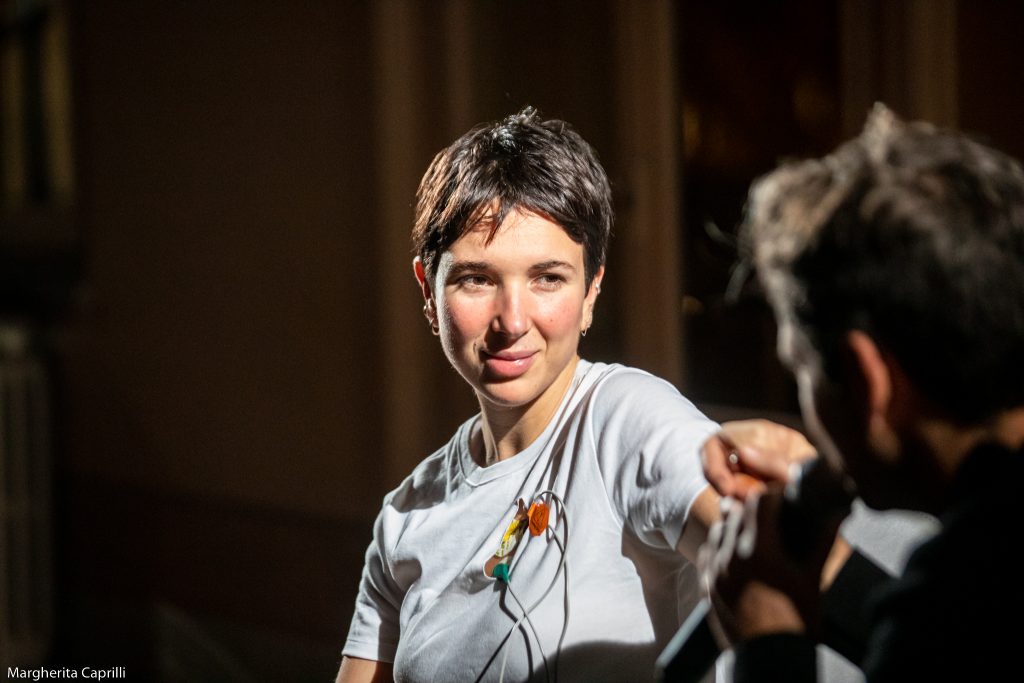
Thanks also to the advice of nursing and first aid trainers, it was decided to measure the heart rate, oxygenation, the presence of carbon dioxide, the quantity of breaths per minute and the blood pressure of the various impersonations of Marina Tsvetaeva, so as to enhance the emotions they feel.
The electrodes of REALITi360 pass from one character to another, so that the public never wonders whether they are dealing with an authentic electrocardiograph. The fiction becomes evident only in the last scene, during which the electrodes are removed but the simulator remains active, taking charge of «the heart of those it has monitored» and bringing it to its death, thus becoming the sixth actor on stage, an autonomous presence with its own message.
In the words of Paolo Innocenti, «it is interesting to see a device like iSimulate REALITi360 involved in other types of language». The discussion between Innocenti, Menni and Mochi Sismondi explored the dramaturgical potential of the instrument and led to the construction of the score, as if the simulator were a real character in the plot. «REALITi360 is perfect for this show, because it has that degree of abstraction – the representation of vital signs – that works very well from a scenic point of view, but it is also a very nice tool from an aesthetic point of view» says Mochi Sismondi.
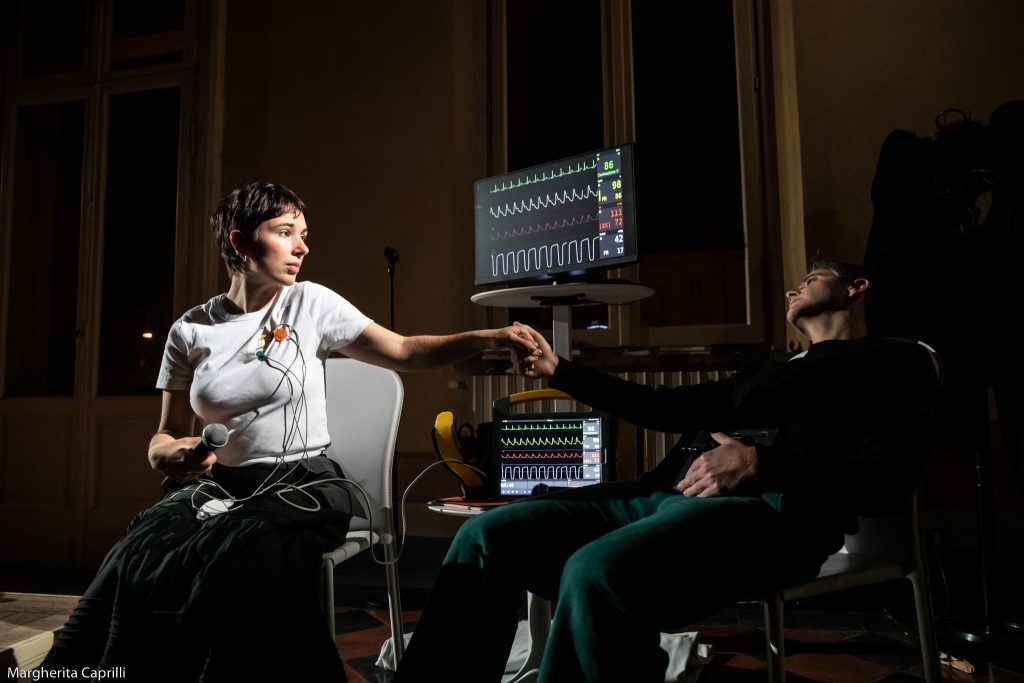
What could be the developments of this new synergy between simulation and theater? Both in simulation and in the theater, participants and spectators are asked respectively to enter the narration to be ready to think that what they experience or see in the simulation room or on stage is true, which in technical jargon is defined as the suspension of disbelief. So it will be interesting to explore in the future how these two dimensions, which already overlap in many ways, can further interpenetrate. From simulated patients to real actors. The use of simulators for artistic purposes, as well as medical ones, opens up a new perspective in which the imaginary and the levels of meaning mingle and intertwine, enriching each other.



